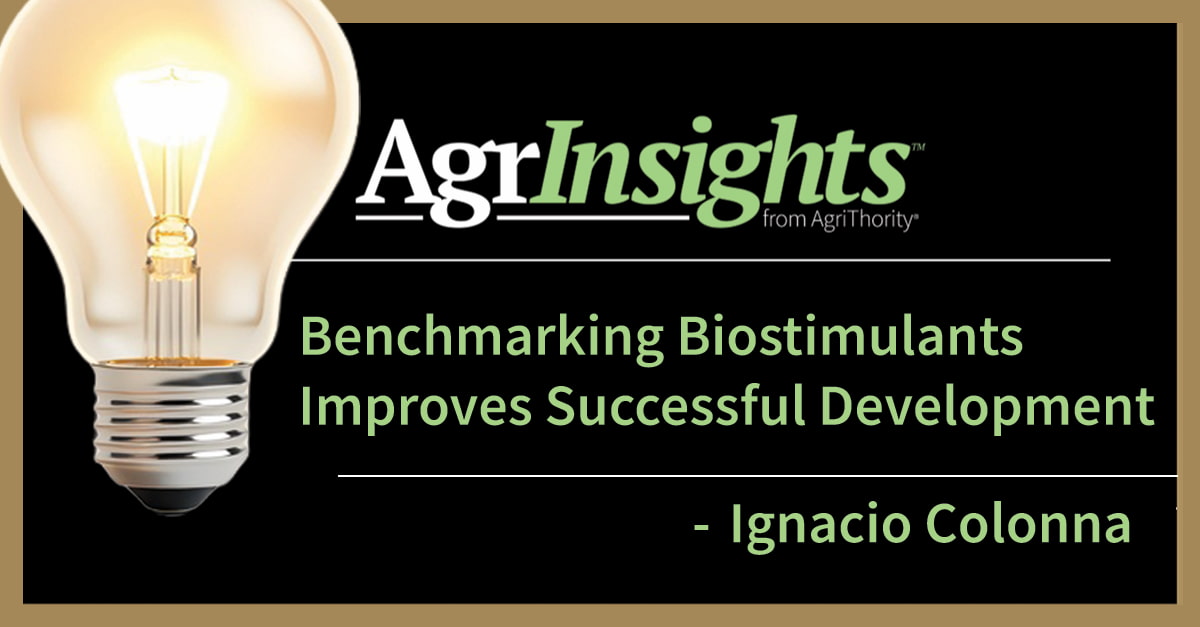With any new technology, the desire is often to move forward quickly to start earning revenue. However, a thorough development process is paramount to ensure a strong understanding of product performance and value for long term success. The development process also should include defining the regulatory pathway and market access strategy early in the process.
Regardless of crop, the complexity of production agriculture requires a disciplined stage-gate process for strategic and scientific development of not only the products, but the business and the market. Success is more achievable when answering the right questions in the right order.
Understanding and Defining the Product
First, understand where your product may fit within target market opportunities. Then consider the registration process including an established timeline for the target markets. The next step is to fine tune that information and dive deeper into performance, placement and positioning.
Defining product performance is paramount to move your product along the stage-gate process. Clearly defined features, benefits and label claims are particularly important as these are the promises you are making to the grower who purchases the product.
The late-stage development will allow you to confirm and showcase the features and benefits of your product. Selling the value of your technology to the distributors and farmers will illustrate their return on investment from integrating your product into their production practices.
The overall product performance will be in their field, so a well-rounded performance story is necessary.
Developing the Performance Story
The product performance should start with an understanding of the mode of action – how it affects the plant or the soil. Illustrate what your product is doing and why. What solution or opportunity are you providing for farmers? The answers are what farmers want to know. The performance story should be built on a foundation of product knowledge, how it helps a grower, and proven efficacy with solid data.
For growers, a key difference lies between seeing a crop respond to a product and diving into the details of what was influencing that specific product response under those specific circumstances. Many times, during initial testing, innovators have a good idea of how the product performs under controlled circumstances. This proof-of-concept testing is critical to determine response. However, newly launched products rarely perform as consistently after commercial launch due to inherent variability in real world conditions.
Each farm is unique, in fact, each field is unique – with many different environments and different production practices. As growers adopt your product, you must have strong knowledge of your product efficacy and understand performance to provide the best set of recommendations to help ensure commercial success. This information is equally important to marketing and commercial sales teams. Building this knowledge happens through replicated trials following rigorous protocols designed to answer specific questions and implemented in sufficient numbers to produce robust, credible data.
Traditionally, crop protection chemistries targeting weeds or insect pests allow for clear characterizations and subsequent recommendations. However, defining biological products is often much more nuanced. To develop an effective performance story for biologicals, knowing where the product works, and where it does not work is essential. This can be a challenge, but this is an important step when building the performance story for biological products.
Determining Product Placement
The foundation of product performance begins with correct recommendations for placing the product within the marketplace. The product positioning must be clear to ensure growers will see the value and have a good experience with it. A significant aspect of successful positioning is defining the target market opportunities including how and when the product should be applied. This takes a detailed understanding of the target crop production systems and determining current farmer practices. Often growers have pre-defined production activities they are employing to apply fertilizer, crop protection and even irrigation. Understanding these current practices will provide a framework for potential application options to the soil or crop during the season.
Commercial teams and distribution channels demand product positioning and performance be well defined to promote new products. Launching a new product is an expensive process and ensuring the product is positioned correctly is a critical step.
Additionally, knowing the answers to the following questions can provide significant confidence to commercial teams as they look to market and sell the product.
- What are the competitive products being used today?
- Is this something unique?
- What are your differentiating features and benefits relative to competitors?
- Would it require a change in grower behavior or grower practices to implement?
With a performance story and market access plan in hand, what is your plan for technology transfer? Determining the best distribution method and sharing the performance story will be an important step. How will you inform and influence early adopters and growers looking for new technology? Have a clear path for farmers to adopt the new technology that fits into their current operation.
Positioning through Best Management Practices
Product positioning is the final piece of the puzzle when defining your product. Proper positioning will allow for product success on farm by ensuring customers see the expected response. Delivering on your product claims upholds the promise you make to the farmer.
Best management practices (BMPs) help ensure consistent use across regions, crops and environments to achieve the best product results possible. Very few products are universal, and the BMPs come into play as you define the product, the application, the right conditions, and the right timing per crop stage. BMPs encompass all of these different components that are critical for the success of your product and, ultimately, for the customers.
As you consider successful commercialization, ensure that all of the hard work during the development process and regulatory plans come together into a succinct message of performance. That message is developed through a disciplined stage-gate process that answers the right questions in the right order.
The AgriThority® Prescriptive Response™ Development service allows innovators to discover and leverage their internal expertise with strategic and scientific specialists. Consistent, disciplined development process is the core capability of well-trained and experienced product, market and business development experts. To learn more about our Prescriptive Response™ development services, contact Luke Samuel.


